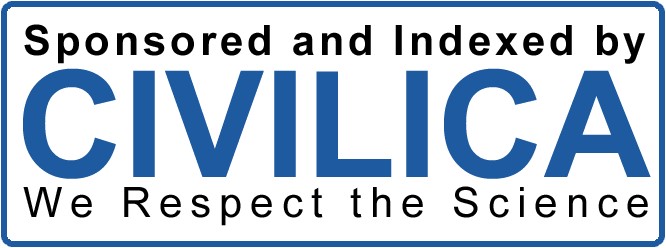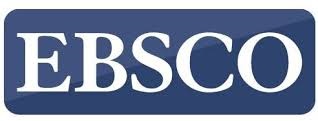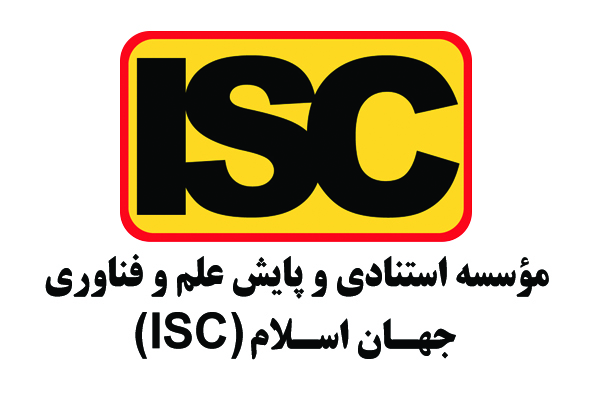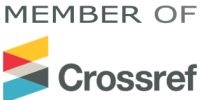طراحی مدل بکارگماری اساتید مدعو دانشگاه فردوسی مشهد
کلمات کلیدی:
بکارگماری, ، بکارگماری اساتید مدعو, نظریه داده بنیاد, رویکرد استراوس و کوربینچکیده
چشمانداز آموزش عالی در سالهای اخیر دستخوش تغییرات قابل توجهی شده است. در عین حال، دانش به عنوان حیاتیترین منبع جوامع معاصر شناخته شده است. تغییرات به سرعت در حال رخ دادن است و هرگونه پاسخگویی کند به مسائل اجتماعی- محیطی شکاف بین دانشگاه و خواستههای جامعه را بیشتر میکند. یکی از مهمترین این تحولات، ظهور استادان مدعو میباشد که تغییر قابل توجهی در نیروی کار دانشگاهی ایجاد کرده است. استفاده از این نوع اساتید بنا به شنیدهها و مشاهدات، گسترش روز افزونی در دانشگاهها دارد که باعث ایجاد چالشهای جدید در امر مدیریت آموزشی دانشگاهها گردیده است. به یک ضرورت پژوهشی پر اهمیت بدل گشته است. لذا پژوهش حاضر با هدف ارائه مدل بکارگماری اساتید مدعو دانشگاه فردوسی مشهد انجام پذیرفت. این پژوهش از نظر هدف بنیادی، از جهت فلسفه تحقیق، تفسیری، رویکرد آن کیفی و استراتژی مورداستفاده داده بنیاد مبتنی بر رویکرد استراوس و کوربین میباشد. جامعه مورد مطالعه پژوهش، رؤسای فعلی و سابق دانشگاه، معاونین آموزشی فعلی و سابق دانشگاه فردوسی مشهد، معاونین آموزشی دانشکدهها، مسئولین هیئت جذب و استخدام اعضای هیئت علمی و مدیران آموزشی گروهها بودند که اعضای نمونه با استفاده از روش نمونهگیری گلوله برفی و بر اساس قاعده اشباع نظری انتخاب شدند. همچنین ابزار گردآوری اطلاعات در پژوهش حاضر مصاحبه میباشد. نتایج تحلیل دادهها با کمک نرمافزار تحلیل کیفی MAXQDA و فرآیندهای کدگذاری باز، محوری و انتخابی تحلیل شد. نتایج پژوهش مشتمل بر ارائه مدلی است که عوامل و مؤلفههای مربوط به شرایط علّی، پدیده محوری، شرایط زمینهای، شرایط مداخلهگر، راهبردها و پیامدهای پژوهش را شناسایی نموده است. در مجموع این پژوهش ارائه مدل بکارگماری اساتید مدعو، زمینه لازم برای فهم و شناخت این موضوع و همچنین تدوین برنامه و سازوکار مدون را فراهم آورده است.
دانلودها
مراجع
Alwali, J. (2024). Innovative work behavior and psychological empowerment: the importance of inclusive leadership on faculty
members in Iraqi higher education institutions. Journal of Organizational Change Management, 37(2), 374-390.
https://doi.org/10.1108/JOCM-03-2023-0084
Baykal, E. (2020). Digitalization of human resources: E-HR. In Tools and techniques for implementing international e-trading
tactics for competitive advantage (pp. 268-286). IGI Global. https://doi.org/10.4018/978-1-7998-0035-4.ch013
Bonaccorsi, A., Barin, L., Belingheri, P., Biagi, F., & Sanchez-Barrioluengo, M. (2023). Is higher education more important
for firms than research? Disentangling university spillovers. The Journal of Technology Transfer, 1-26.
https://doi.org/10.1007/s10961-023-10008-y
Bruster, D., & Weimann, R. (2004). Prologues to Shakespeare's theatre: performance and liminality in early modern drama.
Routledge. https://doi.org/10.4324/9780203362686
Chonsalasin, D., & Khampirat, B. (2022). The impact of achievement goal orientation, learning strategies, and digital skill on
engineering skill self-efficacy in Thailand. IEEE Access, 10, 11858-11870.
https://doi.org/10.1109/ACCESS.2022.3146128
Crocetti, J. (2014). Nursing clinical faculty self-efficacy following an orientation using simulation. Nursing Education
Perspectives, 35(3), 193-194. https://doi.org/10.5480/12-819.1
Deutsch, A. R., Chernyavskiy, P., Steinley, D., & Slutske, W. S. (2015). Measuring peer socialization for adolescent substance
use: A comparison of perceived and actual friends' substance use effects. Journal of Studies on Alcohol and Drugs, 76(2),
-277. https://doi.org/10.15288/jsad.2015.76.267
Elder, S. J., Svoboda, G., Ryan, L. A., & Fitzgerald, K. (2016). Work factors of importance to adjunct nursing faculty. Journal
of nursing education, 55(5), 245-251. https://doi.org/10.3928/01484834-20160414-02
Esmaili, L., Jamali, A., & Ghorchian, N. (2024). Identifying and Analyzing the Dimensions and Components of Improving
Social Intelligence among the Faculty Members of Farhangian University of Tehran. Sociology of Education, 10(1), 204-
https://doi.org/10.22034/ijes.2024.2009561.1454
Ezenwagu, S. A., Okonkwo, E. C., Nnorom, S. U., & Nwankwo, B. C. (2020). Innovative pedagogical methods and quality
assurance in tertiary institutions in Nigeria: challenges and ways forward for future upswing. European Journal of
Education Studies, 7(9).
GOGICAL_METHODS_AND_QUALITY_ASSURANCE_IN_TERTIARY_INSTITUTIONS_IN_NIGERIA_CHALL
ENGES_AND_WAYS_FORWARD_FOR_FUTURE_UPSWING_INNOVATIVE_PEDAGOGICAL_MET
Fuller, R., Brown, M. K., & Smith, K. (2023). Adjunct faculty voices: Cultivating professional development and community at
the front lines of higher education. Taylor & Francis. https://doi.org/10.4324/9781003442882-4
Kezar, A., & Sam, C. (2010). Understanding the new majority of non-tenure-track faculty in higher education--Demographics,
experiences, and plans of action. ASHE Higher Education Report, 36(4), 1-133. https://doi.org/10.1002/aehe.3604
Mirarab Razi, R., & Dibaei Saber, M. (2018). Predicting Organizational Citizenship Behavior of Teachers Based on Cultural
Intelligence and Conflict Management. Organizational Culture Management, 16(2), 461-484.
https://www.sid.ir/paper/196454/%D8%AE%D8%B1%DB%8C%D8%AF%20%D8%A7%D9%82%D8%B3%D8%A7
%D8%B7%DB%8C%20%DA%AF%D9%88%D8%B4%DB%8C%20%D8%A2%DB%8C%D9%81%D9%88%D9%86
%2014
Mohammadi Fomani, M., Sharifi, A., & Etemad Ahari, A. a. (2024). Development, Validity, and Reliability Assessment of the
Professional Ethics Scale for Faculty Members of Farhangian University [Research Article]. Iranian Journal of
Educational Sociology, 7(2), 8-15. https://doi.org/10.61838/kman.ijes.7.2.2
Nagro, S. A., Macedonia, A., Raines, A., Day, J., Parker, A., Parsons, S., & Zenkov, K. (2023). A systematic review of teacher
factors for successfully educating students with disabilities. The New Educator, 19(2), 77-102.
https://doi.org/10.1080/1547688X.2023.2193226
Nottingham, S. L., Mazerolle, S. M., & Barrett, J. L. (2017). Roles of Mentoring for Novice Athletic Training Faculty Members.
Athletic Training Education Journal, 12(4), 234-243. https://doi.org/10.4085/1204234
Razavi Saeedi, S. R. (2021). Presenting a Model and Ranking the Competencies of Adjunct Faculty Members at Islamic Azad
University, North Tehran Branch. Iranian Higher Education, 13(2), 165-188. https://civilica.com/doc/1585150/
Roumiani, Y., Abili, K., Pourkarimi, J., & Farahbakhsh, S. (2019). Designing and Validating a Model of Professional
Competencies for Promising Faculty Members in Comprehensive Universities with Regional Performance Standards.
Research in Medical Education, 11(3), 49-58. https://doi.org/10.29252/rme.11.3.49
Sepahvand, R., & Morovati, H. (2020). University excellence with level 5 leadership approach: a qualitative study. Journal of
Qualitative Research in Health Sciences, 9(1), 59-69. http://jqr1.kmu.ac.ir/article_90994.html
Shafiee, F. S., & Sobhani, H. (2018). Analyzing and explaining the research performance of faculty members with mixed
approach and multilevel modeling, case study: University of Tehran. Journal of Educational Planning Studies, 7(13), 97-
Thakral, P., Srivastava, P. R., Dash, S. S., Jasimuddin, S. M., & Zhang, Z. (2023). Trends in the thematic landscape of HR
analytics research: a structural topic modeling approach. Management Decision, 61(12), 3665-3690.
https://doi.org/10.1108/MD-01-2023-0080
Tyndall, C. L. (2017). Called to teach: A mixed methods exploration of community college adjunct faculty's teaching selfefficacy Virginia Commonwealth University]. https://scholarscompass.vcu.edu/etd/4715/
Valdebenito, S., Eisner, M., Farrington, D. P., Ttofi, M. M., & Sutherland, A. (2018). School‐based interventions for reducing
disciplinary school exclusion: A systematic review. Campbell Systematic Reviews, 14(1), i-216.
https://doi.org/10.4073/csr.2018.1
Vatousios, A., & Happonen, A. (2022). Transforming HR and improving talent profiling with qualitative analysis digitalization
on candidates for career and team development efforts. In Intelligent Computing: Proceedings of the 2021 Computing
Conference, Volume 1 (pp. 1149-1166). Springer International Publishing. https://doi.org/10.1007/978-3-030-80119-9_78
Wallin, D. L. (2004). Valuing professional colleagues: Adjunct faculty in community and technical colleges. Community
College Journal of Research and Practice, 28(4), 373-391. https://doi.org/10.1080/10668920490424087
Williamson, J. L. (2014). Adjunct faculty: Perceptions of motivation and challenges of teaching adult learners Northeastern
University]. https://repository.library.northeastern.edu/files/neu:336547

دانلود
چاپ شده
ارسال
بازنگری
پذیرش
شماره
نوع مقاله
مجوز
حق نشر 2025 تکنولوژی در کارآفرینی و مدیریت استراتژیک

این پروژه تحت مجوز بین المللی Creative Commons Attribution-NonCommercial 4.0 می باشد.










